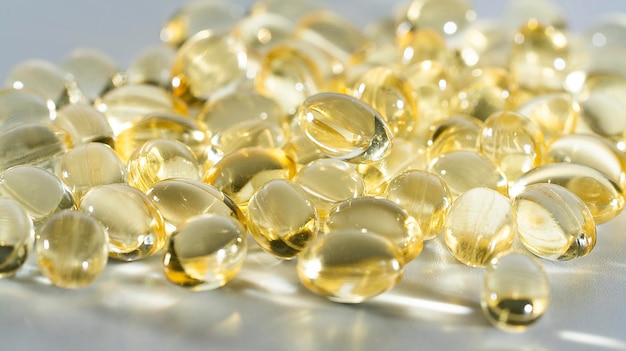What Dr. Haas Says About Vitamin E
When it comes to vitamins, Dr. Elson M. Haas has pretty much written the book. His book, “Staying Healthy with Nutrition: The Complete Guide to Diet and Nutritional Medicine,” delves deeply into the topic. Here’s what he has to say about vitamin E.
Sources of Vitamin E
Dr. Haas explains that vitamin E, in its various tocopherol forms, is found in both plant and animal foods, though animal sources like butter, egg yolk, milk fat, and liver aren’t very rich in it. The best sources of vitamin E are vegetable oils and seed or nut oils.
“The oil component of all grains, seeds, and nuts contains tocopherols. The protective covering of the grains has vitamin E, which is lost during milling or refinement. To preserve vitamin E, extraction from nuts and seeds must happen naturally, such as through cold pressing, rather than heat or chemical extraction used in food processing,” says Dr. Haas.
Due to these processing methods, the average American diet often lacks natural sources of tocopherols. Cold-pressed vegetable oils are the best source of vitamin E. They’re most beneficial when used raw in dressings and sauces rather than cooking since heating can negatively affect polyunsaturated oils.
Consuming Vitamin E Through Diet
Dr. Haas also shares insights on the vitamin E content in various foods.
“The alpha-tocopherol content differs among foods and oils. Safflower oil is one of the best sources, with around 90 percent of its vitamin E being alpha-tocopherol. On the other hand, corn oil only has about 10 percent. Foods like soybeans, margarine, raw green peas, spinach, asparagus, kale, cucumber, tomato, and celery also contain significant amounts of vitamin E,” he explains.
Where possible, getting your vitamins from plant-based foods is preferable compared to supplements, which can often be made from synthetic ingredients. Here are some of the best food sources of vitamin E:
The Best Food Sources of Vitamin E
| Food | Milligrams (mg) per serving | % of Recommended Daily Value |
|---|---|---|
| Wheat germ oil, 1 tablespoon | 20.3 | 100 |
| Sunflower seeds, dry roasted, 1 ounce | 7.4 | 37 |
| Almonds, dry roasted, 1 ounce | 6.8 | 34 |
| Sunflower oil, 1 tablespoon | 5.6 | 28 |
| Safflower oil, 1 tablespoon | 4.6 | 25 |
| Hazelnuts, dry roasted, 1 ounce | 4.3 | 22 |
| Peanut butter, 2 tablespoons | 2.9 | 15 |
| Peanuts, dry roasted, 1 ounce | 2.2 | 11 |
| Spinach, boiled, 1/2 cup | 1.9 | 10 |
| Broccoli, chopped, boiled, 1/2 cup | 1.2 | 6 |
| Kiwifruit, 1 medium | 1.1 | – |
| Mango, sliced, 1/2 cup | 0.7 | – |
| Tomato, raw, 1 medium | 0.7 | – |
| Spinach, raw, 1 cup | 0.6 | – |
Additional Health Benefits of Vitamin E
Vitamin E is well-known for its antioxidant properties, which counteract free radicals and reduce oxidative stress. This can help prevent serious health issues like neurodegenerative diseases by repairing cell damage.
Dr. Haas elaborates: “Free radical formation results from various chemical reactions in the body and is a major cause of diseases such as heart disease, hypertension, arthritis, senility, and possibly even cancer. Without vitamin E, cell membranes and DNA are less protected from free radical damage.”
“Vitamin E, as an antioxidant, stabilizes cell membranes and protects tissues in the skin, eyes, liver, breast, and testes. It also shields the lungs from oxidative damage due to environmental substances. Free radical formation and oxidation are linked to cancer development, although more research is needed.”
Additionally, vitamin E supports heart and muscle cell respiration, potentially improving stamina and reducing cardiovascular disease. It decreases platelet aggregation and platelet adhesiveness to collagen, more effectively than aspirin.
Supplementing to Consume Antioxidants
A diet rich in fresh fruits and vegetables, plenty of water, and minimal processed foods typically ensures sufficient antioxidant intake. For extra support, plant-based supplements can be beneficial. While antioxidants are one of vitamin E’s many benefits, let’s explore a few more health perks this vitamin can offer.
Other Uses for Vitamin E
Dr. Haas mentions various other uses for vitamin E:
“Its antioxidant effects reduce thrombin formation and blood clotting. It also appears to minimize platelet aggregation and stickiness, which can promote atherosclerosis.”
“Combining vitamins A and E can lower cholesterol and general fat accumulation. Vitamin E is also useful before and after surgery at doses of 200-300 IUs per day to aid in healing and minimize clotting. However, higher dosages might suppress the healing process.”
Vitamin E has notable topical benefits in skincare products, ranging from moisturizers to creams that help with skin lesions, ulcers, and burns. It’s effective in healing or reducing scars from injury or surgery. According to Dr. Haas, it can also be beneficial for women, alleviating menstrual pain and other menstrual issues, and reducing menopause symptoms like headaches, hot flashes, and vaginal dryness.
Vitamin E might also help with conditions like shingles, eye complications, menstrual migraines, fatty liver disease, muscular dystrophy, leg cramps, restless leg syndrome, and circulatory issues related to diabetes. While it isn’t a cure-all, it plays a significant role in maintaining good health.
How Much Vitamin E Do I Need?
The average American diet often falls short of adequate vitamin E intake. Dr. Haas shares insights on the required amounts:
“The needed amount of vitamin E varies with body size and the amount of polyunsaturated fats in the diet. More vitamin E is needed to protect these fats from oxidation, especially when consuming refined oils, fried foods, or rancid oils. Women taking supplemental estrogen or with estrogen imbalances need more vitamin E, as do people exposed to air pollution.”
Dr. Haas cautions against taking vitamin E with iron, particularly inorganic iron like ferrous sulfate found in food products. However, selenium, another important antioxidant, can enhance the effectiveness of vitamin E.
“Despite the low RDA for vitamin E, many people do not get enough through diet alone. For preventive measures, 400-600 IUs of vitamin E is typically used. For therapeutic effects, 800-1600 IUs daily is suggested, starting with a low level and gradually increasing it. Levels over 1600 IUs per day should only be taken under medical supervision.”
For daily vitamin E intake, refer to the following chart:
Recommended Dietary Allowances of Vitamin E
| Age | Males | Females | Pregnancy | Lactation |
|---|---|---|---|---|
| 0 – 6 months | 4 mg (6 IU) | 4 mg (6 IU) | – | – |
| 7 – 12 months | 5 mg (7.5 IU) | 5 mg (7.5 IU) | – | – |
| 1 – 3 years | 6 mg (9 IU) | 6 mg (9 IU) | – | – |
| 4 – 8 years | 7 mg (10.4 IU) | 7 mg (10.4 IU) | – | – |
| 9 – 13 years | 11 mg (16.4 IU) | 11 mg (16.4 IU) | – | – |
| 14+ years | 15 mg (22.4 IU) | 15 mg (22.4 IU) | 15 mg (22.4 IU) | 19 mg (28.4 IU) |
If you have high blood pressure, large doses of vitamin E can increase it. However, 400 IUs daily is usually safe. If you have high blood pressure and want to start vitamin E supplementation, monitor your body and blood pressure. Always consult your healthcare provider before beginning any supplementation program.



